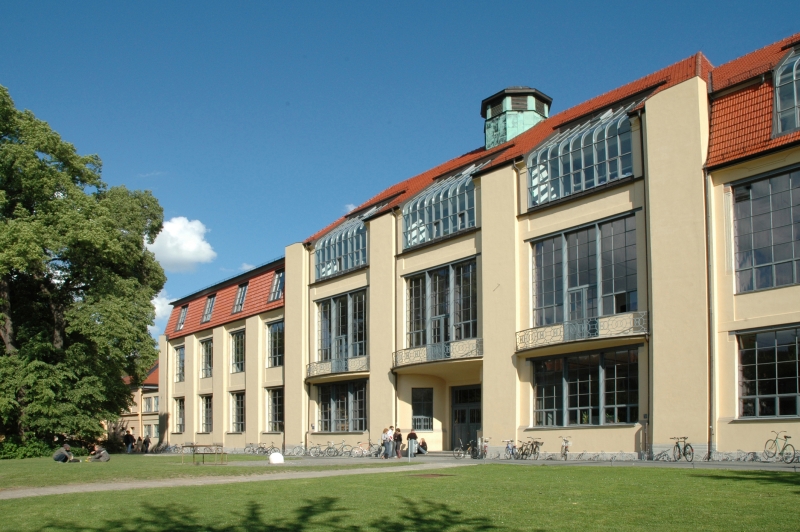(smow) blog Design Calendar: April 12th 1919 – Official confirmation of the name “Staatliches Bauhaus in Weimar”
Herewith we inform the directors of the Hochschule für bildende Kunst that the Provisional Republican Government has approved the request to rename the unified Hochschule für bildende Kunst and Kunstgewerbeschule as “Staatliches Bauhaus in Weimar”1
With this succinct letter from the Office of the Hofmarschallamt in Weimar on 12th April 1919, Bauhaus formally existed.
A succinct letter that ended four long years of negotiation and planning, and which – arguably, and depending on your position – opened a chapter which would change architecture and design more comprehensively than any movement before or since.
Having decided in 1915 to leave Germany for his native Belgium, Henry van der Velde recommended Hermann Obrist, August Endell and Walter Gropius as potential successors for his position as Director of the Kunstgewerbeschule in Weimar.2 In October of the same year Walter Gropius began a correspondence with Fritz Mackensen, Director of the Großherzoglich Sächsische Hochschule für bildende Kunst, also in Weimar, about a new Department of Architecture and Applied Arts at the school, a new department Gropius was earmarked to lead.
In 1917 Mackensen, together with the school’s Professors for painting, graphics and sculpture, approached the Weimar government demanding not only the creation of such an architecture department but also the employment of technicians with handicraft skills to assist and support the teaching at the school: clearly as a step to helping Gropius establish his craft based faculty.
There then followed a period of social and political unrest leading to the German Revolution and the overthrow of Kaiser Wilhelm II on November 9th 1918……
On January 31st 1919 Walter Gropius, no doubt sensing the favourable wind blowing across the young republic, contacted the new government in Weimar to inform them about the talks that had taken place with the old regime, and to offer his services to the new authorities.3
With success.
On March 29th 1919 the Vossische Zeitung reported, “The Berlin architect Walter Gropius has, according to our Weimar correspondent, been appointed Director of the Hochschule für bildende Kunst in Weimar. Simultaneously he will assume control of the Kunstgewerbeschule with the Kunstgewerbliche Seminar that the former Professor Vandervelde [sic] led”.4 On April 1st 1919 Gropius formally signed a contract with the Office of the Hofmarschallamt in Weimar appointing him Director of the new unified institution, an institution which received its new name on April 12th, and shortly afterwards Walter Gropius published his “Bauhaus Manifesto”.
The rest, as they say…………………………..
1. Letter from Hofmarschallamt Weimar, reproduced in hans M. wingler “Das Bauhaus. Weimar Dessau Berlin und die Nachfolge in Chicago seit 1937” Verlag Gebr. Rasch & Co und DuMont Schauberg, 4th Edition 2002
2. Michael Siebenbrodt “Bauhaus Weimar. Entwürfe für die Zukunft” Hatje Cantz Verlag Ostfildern, 2000
3. ibid
4. Vossische Zeitung, Saturday 29th March 1919 (Morning Edition)

Henry van de Velde's Kunstgewerbeschule in Weimar building. Later it housed Bauhaus Weimar. Today serves as the main building of the Bauhaus Universität Weimar. (©Bauhaus-Universität Weimar, Foto: Nathalie Mohadjer)
Tagged with: Bauhaus, Henry van de Velde, Walter Gropius, Weimar